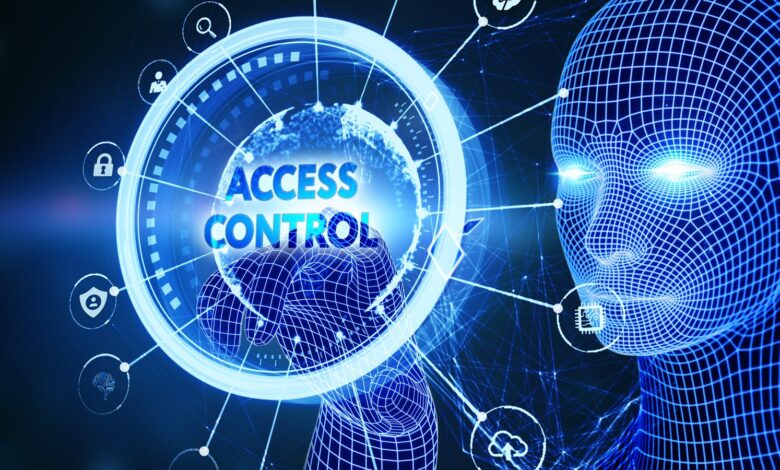
The security of corporate assets, both physical and intellectual, is paramount these days. As businesses grow and technology advances, Singapore companies are increasingly exploring various access control methods to protect their premises, staff, and sensitive data.
Among the most popular solutions are biometric systems, access cards, and mobile access. But which one is the best for your business?
What Are the Differences Between Biometric, Card, and Mobile Access?
Access control systems are crucial for safeguarding business premises from unauthorized access. They ensure that only authorized individuals can enter restricted areas, enhancing both physical security and operational efficiency. The three most common access control methods are biometric systems, card-based systems, and mobile access solutions. Let’s dive into the key characteristics of each:
1. Biometric Access Control
Biometric access control systems identify individuals based on unique physical traits, such as fingerprints, iris patterns, facial recognition, or even hand geometry. These systems are designed to provide a highly secure method of access because they rely on biological data, which is difficult to replicate or steal.
Pros of Biometric Systems:
- High Security: Biometric data is unique to each individual, making it extremely difficult for unauthorized persons to gain access, even if they have physical access cards or mobile devices.
- Convenience: Employees and visitors do not need to carry physical access cards or remember passwords. The biometric process is typically quick and effortless.
- Reduced Risk of Credential Theft: Unlike cards or passwords, biometric data cannot be lost, stolen, or shared. This reduces the risk of unauthorized access.
Cons of Biometric Systems:
- Cost: Biometric systems are typically more expensive to install and maintain compared to card-based systems. They also require specialized hardware, such as fingerprint scanners or facial recognition cameras.
- Privacy Concerns: Some employees or visitors may be uncomfortable with having their biometric data stored, fearing potential misuse or unauthorized access to their personal information.
- False Positives/Negatives: While advanced biometric systems have a low error rate, there is still a slight possibility of false positives (incorrectly granting access) or false negatives (denying access to authorized individuals).
2. Card-Based Access Control
Card-based access control is one of the most widely used methods in corporate environments, particularly in Singapore. In this system, employees or authorized individuals are issued access cards that they use to gain entry into restricted areas.
Pros of Card-Based Systems:
- Affordable: Card access systems are generally more cost-effective than biometric systems, making them an attractive option for smaller businesses or those with budget constraints.
- Easy to Implement: The installation of card-based systems is relatively simple and doesn’t require specialized hardware beyond card readers and door access mechanisms.
- Flexibility: Access cards can be easily reprogrammed or replaced if lost or stolen, allowing businesses to quickly revoke access to unauthorized individuals.
Cons of Card-Based Systems:
- Risk of Theft or Loss: Cards can be lost, stolen, or even shared, posing a security risk. If not immediately deactivated, a lost card can allow unauthorized entry.
- Maintenance: Cards may get damaged or worn over time, necessitating replacements. This could lead to additional operational costs and disruptions.
- Limited User Identification: Unlike biometric systems, card access does not verify the identity of the individual carrying the card. It only ensures that the person has possession of the card, which can be easily transferred.
3. Mobile Access Control
Mobile access control leverages smartphones and other mobile devices to grant entry. Employees use their mobile phones to unlock doors, typically through Bluetooth, NFC (Near Field Communication), or Wi-Fi-enabled systems. This technology is becoming increasingly popular in modern businesses due to the proliferation of smartphones and mobile apps.
Pros of Mobile Access Systems:
- Convenience and User Experience: Employees carry their smartphones everywhere, and mobile access eliminates the need to carry a separate access card. It’s also easier to manage credentials remotely.
- No Physical Hardware: Unlike card-based systems, mobile access does not require physical cards or fobs, reducing the need for replacements and the risks associated with lost or stolen credentials.
- Integration with Other Systems: Mobile access can often integrate with other security measures such as video surveillance, alarms, and building management systems, creating a more streamlined security infrastructure.
Cons of Mobile Access Systems:
- Device Dependency: Mobile access systems are reliant on smartphones, which means that employees who do not have smartphones, or whose phones are out of battery, may face access issues.
- Security Risks: While mobile access systems are generally secure, they can still be vulnerable to hacking, especially if the mobile devices or networks are not properly secured.
- Initial Setup Costs: Setting up a mobile access system may involve more advanced technology, making the initial investment higher than that of traditional card-based systems.
What Should Businesses in Singapore Consider When Choosing an Access Control System?
When it comes to selecting the right access control system for your company in Singapore, there are several key factors to consider:
1. Security Needs
The level of security required depends on the type of business and the sensitivity of the areas being protected. For businesses dealing with high-value assets, sensitive information, or restricted areas, biometric systems may provide the best protection. For companies with less stringent security requirements, card or mobile access may suffice.
2. Budget
Budget is often a deciding factor in choosing between biometric, card, or mobile access systems. While biometric systems offer the highest level of security, they can be expensive to implement. Card-based systems are more affordable, and mobile access systems, while technologically advanced, may also have a higher upfront cost due to the necessary infrastructure.
3. User Convenience
For employees and visitors, convenience is key. Card access systems are relatively easy to use, but mobile access systems offer the highest level of convenience, especially since most people already carry smartphones. Biometric systems are also convenient once set up but may take a little longer to process.
4. Scalability
Consider the future growth of your business. If you plan on expanding or adding more locations, a system that is easily scalable (like mobile access or card-based access) may be more suitable. Biometric systems, while highly secure, may become cumbersome and costly to scale.
5. Regulatory Compliance
In Singapore, data protection is governed by the Personal Data Protection Act (PDPA). Ensure that whichever access control system you choose complies with local regulations. Biometric systems, for instance, must ensure that employees’ personal data is stored securely and not misused.
Which Access Control System is Right for Your Business in Singapore?
The right access control system depends on your company’s specific needs, budget, and future goals. Each system has its strengths and weaknesses, so it’s important to assess these factors in the context of your security and operational requirements. Here’s a quick guide to help you decide:
- Choose Biometric Access: If security is your top priority and you are willing to invest in the latest technology, biometric systems are ideal for companies that require stringent access control, such as financial institutions, government offices, or data centers.
- Choose Card-Based Access: If you need a budget-friendly, easy-to-implement system that works for a medium-sized company or office, card access is a tried-and-tested solution that offers a balance between cost and security.
- Choose Mobile Access: If convenience, scalability, and integration with other digital systems are important to you, mobile access provides a modern solution for businesses looking to simplify access control while maintaining robust security.






